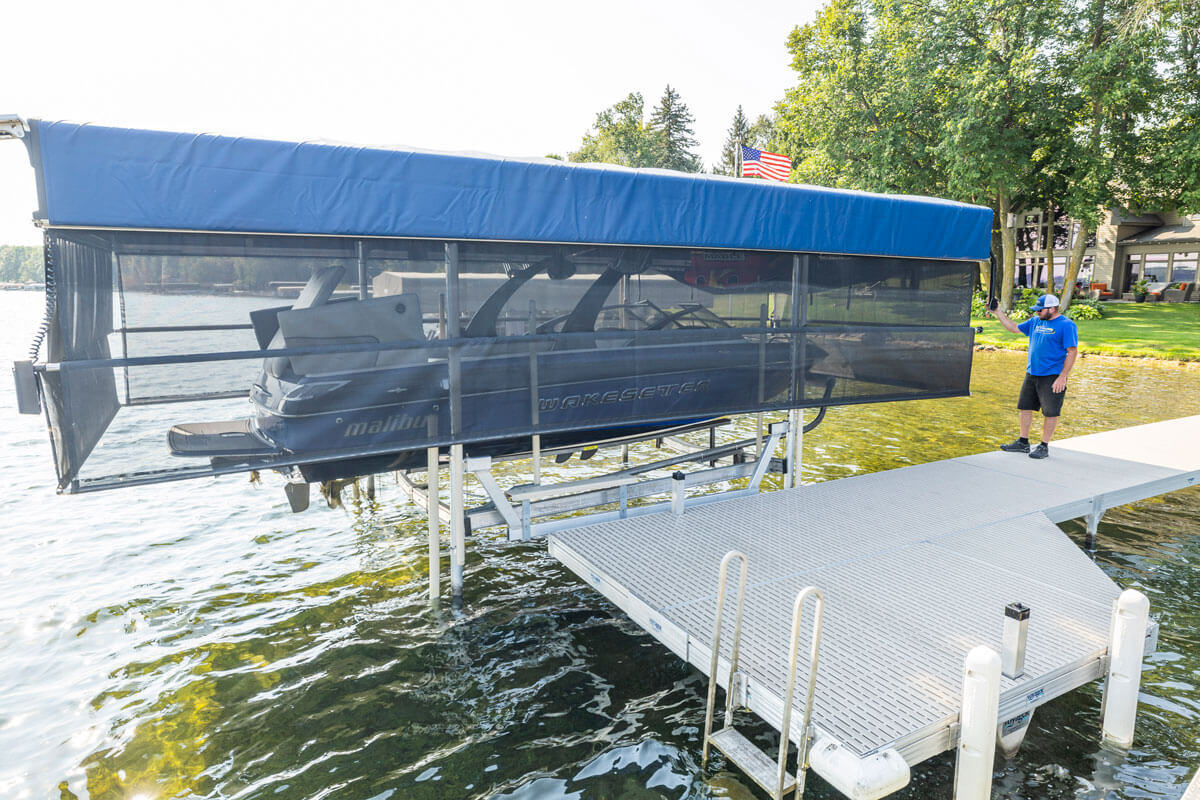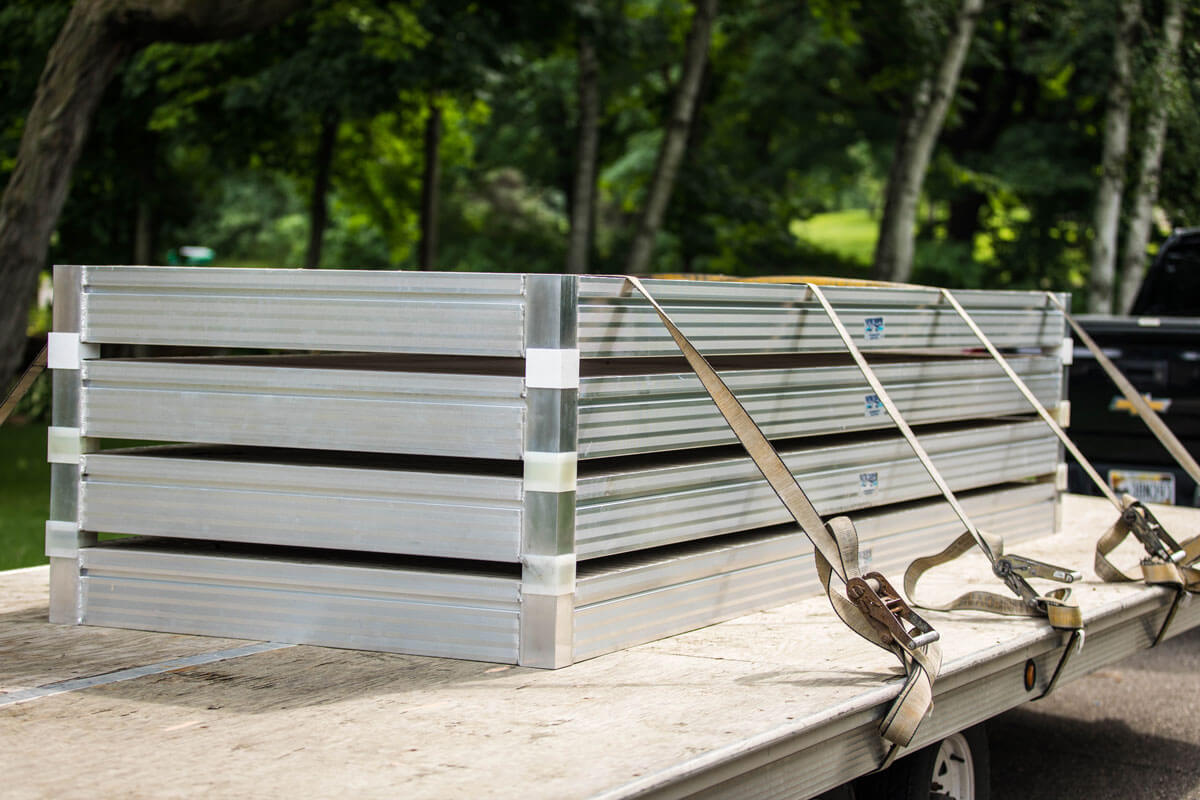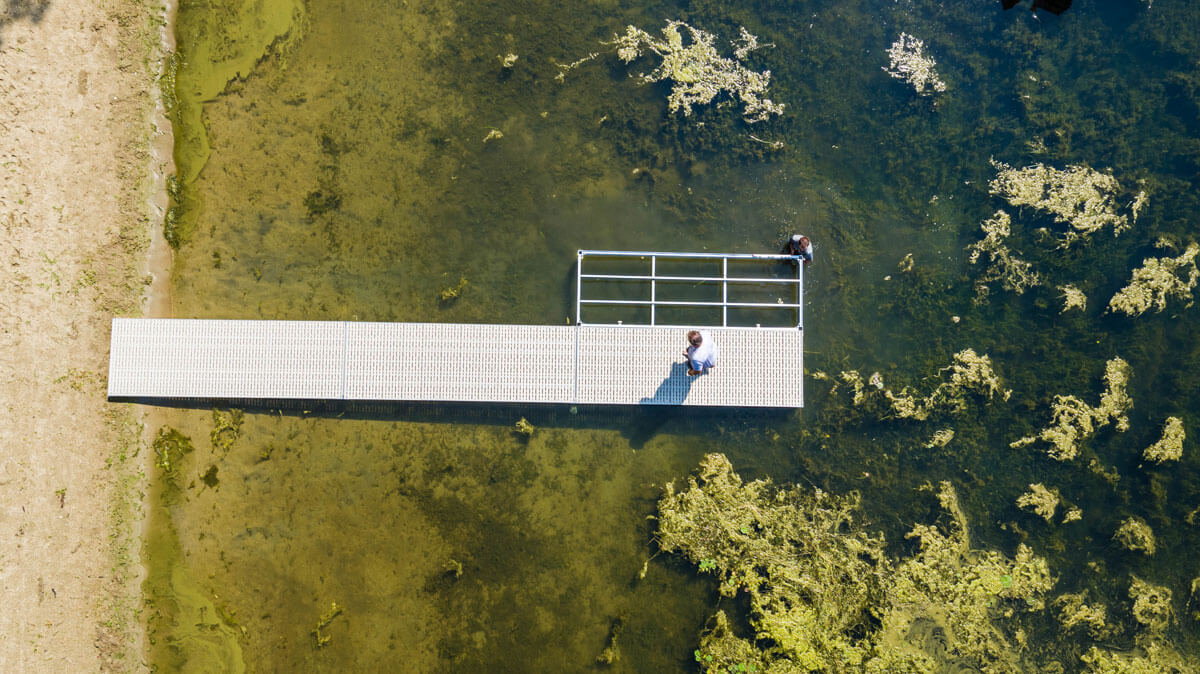As the summer season draws to a close, it is time for dock owners to turn their attention to winterizing their docks. Proper dock removal and storage are essential to protect your investment from the harsh winter conditions and ensure it remains in excellent condition for next summer. Let’s explore the importance of winterizing your dock, the benefits of safe removal and storage, and dock storage options.
IMPORTANCE OF WINTERIZING YOUR DOCK
Winterizing your dock is crucial to avoid potential damage caused by freezing temperatures, ice, and snow. Water can expand when it freezes, putting stress on dock structures. By safely removing and storing your dock during the winter, you can prevent costly repairs and extend its lifespan.
STEPS FOR SAFELY REMOVING AND STORING YOUR DOCK

To ensure a smooth winterization process, follow these steps for safely removing and storing your dock.
- Inspect the dock: Look for any signs of wear and tear. Address any necessary repairs before storage.
- Disconnect utilities: Disconnect power and water lines to prevent freezing and damage.
- Properly dismantle: Disassemble the sections carefully and label them for easy reassembly in the spring.
DOCK STORAGE OPTIONS

When it comes to dock storage, you have two main options to choose from: onshore storage and dry stack storage. All Voyager Dock products are made of weather-resistant materials so either storage option is suitable.
- Onshore storage: Onshore storage offers easy accessibility, allowing you to quickly reinstall your dock when summer rolls around. Make sure your dock is stored in a way that prevents water from pooling or getting trapped inside any components. For example, store the Titan Deck top side up or lean it against something so that water can drain out. Pay attention to all aluminum parts of your dock. Ensure that they are not stored in a manner where water can collect inside. Check the dock screw legs to ensure they are not stored upside down, where water can collect inside and potentially freeze when the weather turns cold.
- Dry stack storage: Dry stack storage is storing your dock in a protected area away from the elements. This provides excellent protection from winter conditions. While Voyager Dock products are designed to be weather-resistant, covered or indoor space will still provide the highest level of protection against the elements.
When deciding between onshore and dry stack storage, consider these factors.
- Dock size and type: The size and type of dock will influence the best storage method. Ask your dock dealer for specific recommendations.
- Budget: Evaluate the cost associated with each storage option and determine what fits within your budgets.
- Accessibility: Will you need to access your dock during the winter months? How soon will you be able to access your dock in the spring/summer?
TIPS FOR WINTER DOCK AND BOAT MAINTENANCE

During the winter season, you can take advantage of the downtime to perform maintenance and upgrades on your dock and boat.
- Repairs: After you have inspected the dock upon removal you can then make the necessary repairs.
- Winterize your boat: Winterize the boat’s engine and system properly.
- Upgrade options: Consider upgrading your dock with accessories like solar power lights, a handrail or dock furniture.
Winterizing your dock and safely storing it during the cold months is essential for preserving its condition and protecting your investment. By choosing the right storage option, whether it is onshore or dry stack storage, you can ensure your dock is ready to provide endless enjoyment in the upcoming summer. Take advantage of the winter downtime to maintain and upgrade your dock and boat, so you are all set to make lasting memories on the water next summer!
